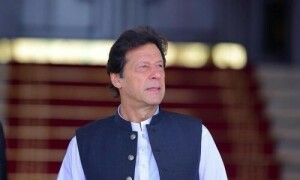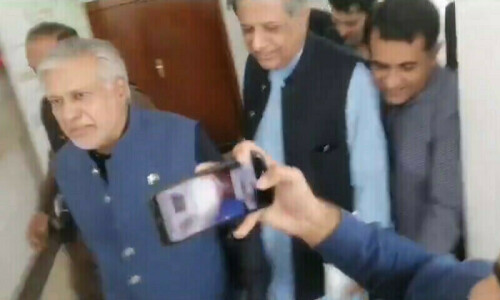As the trust deficit between the Pakistan Muslim League(Nawaz) and the Pakistan People’s Party widens -- not least because of the serious differences over a number of constitutional and judicial issues --, their coalition in Punjab struggles to meet its provincial own tax and non-tax revenue target of Rs105.645 billion for this fiscal year.
“The collection of the provincial own tax and non-tax revenue is feared to fall substantially short of the target for the year,” official sources told Dawn last week.
These sources blame the slowing economy for the difficulties in achieving the revenue target. The economic slow down has jeopardised plans to raise Rs17 billion from the disinvestment of the state land and other assets.
“Unless we are certain that these assets will fetch good price, we wouldn’t privatise them,” says an official.
These officials estimate that the gap between the annual revenue target and actual collection could be 25 per cent or more. But some say the shortfall could be lower if the economic activity picks up over the next five months.
The government has fixed its tax revenue target at Rs40.362 billion, up from the last year’s budgetary estimate of Rs37.315 billion and actual collection of Rs30.627 billion. The actual tax collection during the financial year 2007 stood at Rs22 billion.The non-tax revenue target for the year is estimated at Rs64.528 billion, down from the last year’s estimate of Rs91.606 billion and actual collection of Rs65.283 billion. In 2007, the government had collected mere Rs36.024 billion as non-tax revenue.
The sluggish economic activity, as claimed by the provincial tax collectors, may just be one factor responsible for the feared shortfall in tax and non-tax revenue. But departmental inefficiencies and rampant corruption remain the major snags in the way of realising targeted revenue collection in Punjab, just like any in other provinces.
There are few, if any, years when the province achieved or reached close to attaining the targeted revenues.
”The provincial tax machinery is not geared for the job. Nor is it trained or organised on modern lines. The departmental and structural rigidities are a major stumbling block and the whole tax apparatus in Punjab and other provinces needs to be reformed and oiled,” says an economist.
He says many a time the revenue targets are unrealistic and enhanced each year merely to factor in inflation and/or for the sake of showing better potential.
The failure of the provincial administration to raise its own revenues makes the province depend heavily on the resource transfer from the federal government under the National Finance Commission (NFC) award for meeting its development and current expenditure.
“Almost 80 per cent of our financial resources come from the federal divisible pool under the NFC. That makes the provincial finances vulnerable to the performance or lack of it of a single federal department -- the Federal Board of Revenue (FBR),” argues an official from the Punjab finance department.
Punjab received Rs183.533 billion from the federal government as its share in the divisible pool and straight transfers during 2007 and Rs219.690 billion in 2008. In 2009, its share is estimated to rise to Rs285.09 billion.
“If the FBR improves its collection as part of the federal government’s effort to increase the tax-to-GDP (gross domestic product) ratio, we will stand to obtain more than the budgeted fiscal resources under the NFC. That will largely make up for the loss in the provincial own revenues,” says another provincial finance department official.
The Planning & Development (P&D) department officials, however, rule out the possibility of lower provincial revenue collection impacting on the annual development spending in the province.
Besides expecting increased transfers under the NFC award, they are hopeful that the provincial government’s efforts to reduce its current spending would help them avoid a cut in the Rs160 billion annual development programme.
The provincial finance department has already released Rs100 billion for the development programme.
“We have utilised 40 per cent of our annual development programme in the first half of
the year to December,” a senior P&D official says. The pace of fund utilisation was even faster for the month of January, he claims, and would pick up further towards the end of the fiscal.
But the sceptics argue that the increasing tensions between the coalition partners in the province and the PML-N’s support for the lawyers’ proposed long march next month against the PPP-led government in Islamabad does not bode well for the economy -- provincial and national both. — Nasir Jamal















































Dear visitor, the comments section is undergoing an overhaul and will return soon.